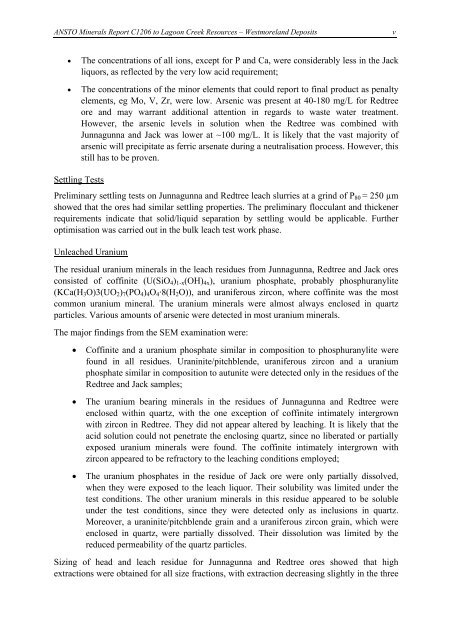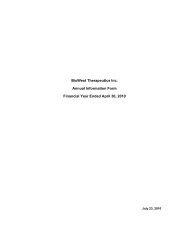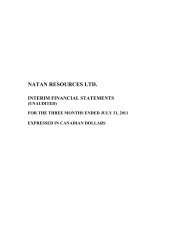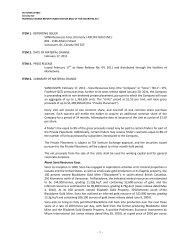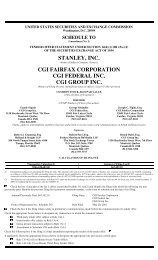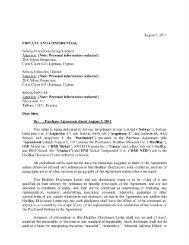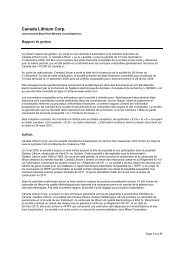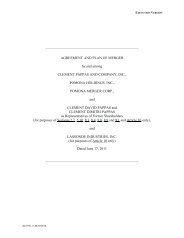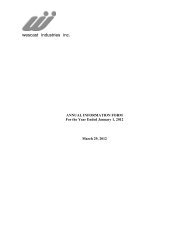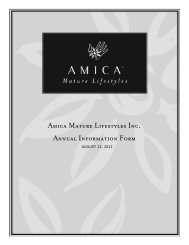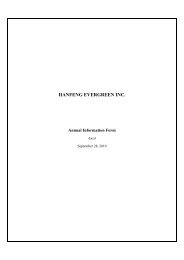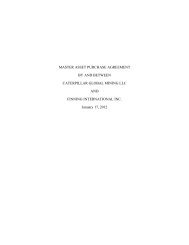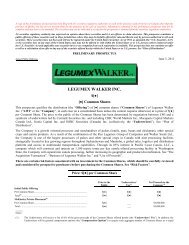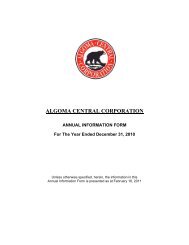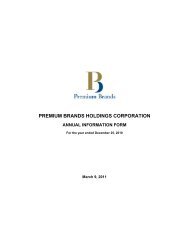Laterite Leach Tests
Laterite Leach Tests
Laterite Leach Tests
Create successful ePaper yourself
Turn your PDF publications into a flip-book with our unique Google optimized e-Paper software.
ANSTO Minerals Report C1206 to Lagoon Creek Resources – Westmoreland Deposits v<br />
• The concentrations of all ions, except for P and Ca, were considerably less in the Jack<br />
liquors, as reflected by the very low acid requirement;<br />
• The concentrations of the minor elements that could report to final product as penalty<br />
elements, eg Mo, V, Zr, were low. Arsenic was present at 40-180 mg/L for Redtree<br />
ore and may warrant additional attention in regards to waste water treatment.<br />
However, the arsenic levels in solution when the Redtree was combined with<br />
Junnagunna and Jack was lower at ~100 mg/L. It is likely that the vast majority of<br />
arsenic will precipitate as ferric arsenate during a neutralisation process. However, this<br />
still has to be proven.<br />
Settling <strong>Tests</strong><br />
Preliminary settling tests on Junnagunna and Redtree leach slurries at a grind of P80 = 250 µm<br />
showed that the ores had similar settling properties. The preliminary flocculant and thickener<br />
requirements indicate that solid/liquid separation by settling would be applicable. Further<br />
optimisation was carried out in the bulk leach test work phase.<br />
Unleached Uranium<br />
The residual uranium minerals in the leach residues from Junnagunna, Redtree and Jack ores<br />
consisted of coffinite (U(SiO4)1-x(OH)4x), uranium phosphate, probably phosphuranylite<br />
(KCa(H3O)3(UO2)7(PO4)4O4·8(H2O)), and uraniferous zircon, where coffinite was the most<br />
common uranium mineral. The uranium minerals were almost always enclosed in quartz<br />
particles. Various amounts of arsenic were detected in most uranium minerals.<br />
The major findings from the SEM examination were:<br />
• Coffinite and a uranium phosphate similar in composition to phosphuranylite were<br />
found in all residues. Uraninite/pitchblende, uraniferous zircon and a uranium<br />
phosphate similar in composition to autunite were detected only in the residues of the<br />
Redtree and Jack samples;<br />
• The uranium bearing minerals in the residues of Junnagunna and Redtree were<br />
enclosed within quartz, with the one exception of coffinite intimately intergrown<br />
with zircon in Redtree. They did not appear altered by leaching. It is likely that the<br />
acid solution could not penetrate the enclosing quartz, since no liberated or partially<br />
exposed uranium minerals were found. The coffinite intimately intergrown with<br />
zircon appeared to be refractory to the leaching conditions employed;<br />
• The uranium phosphates in the residue of Jack ore were only partially dissolved,<br />
when they were exposed to the leach liquor. Their solubility was limited under the<br />
test conditions. The other uranium minerals in this residue appeared to be soluble<br />
under the test conditions, since they were detected only as inclusions in quartz.<br />
Moreover, a uraninite/pitchblende grain and a uraniferous zircon grain, which were<br />
enclosed in quartz, were partially dissolved. Their dissolution was limited by the<br />
reduced permeability of the quartz particles.<br />
Sizing of head and leach residue for Junnagunna and Redtree ores showed that high<br />
extractions were obtained for all size fractions, with extraction decreasing slightly in the three


